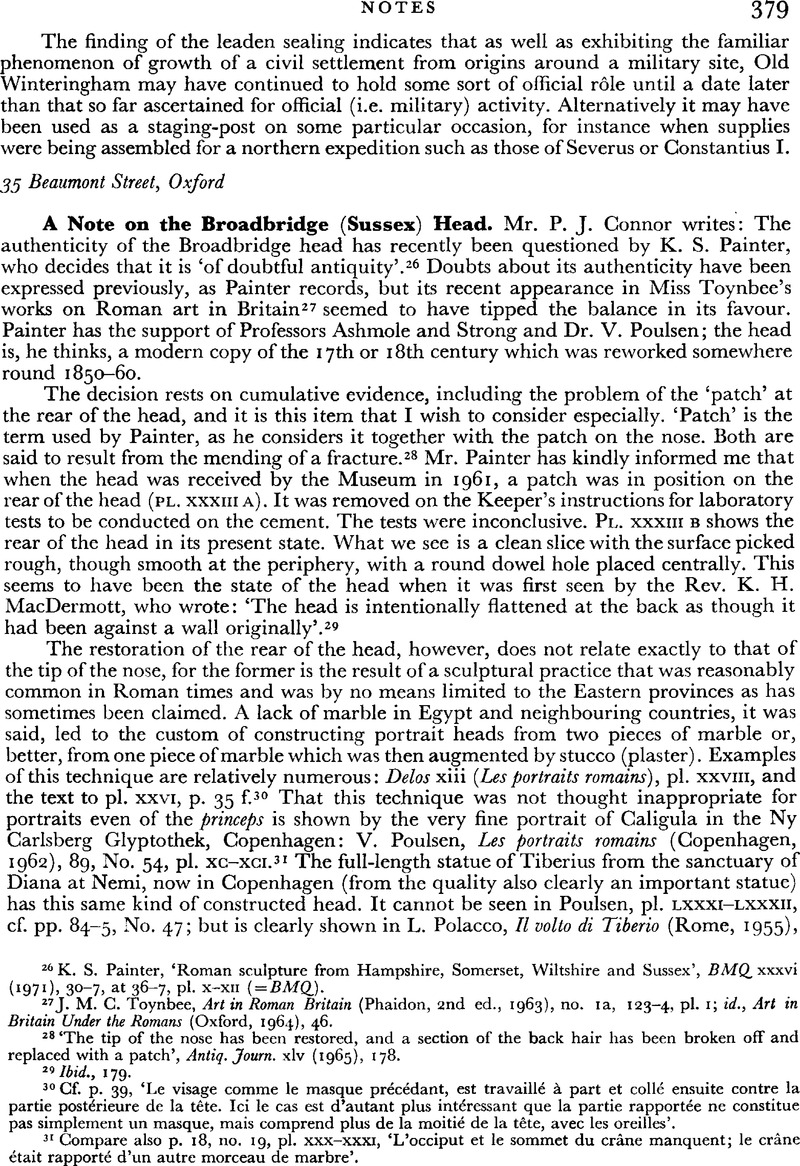Published online by Cambridge University Press: 09 November 2011

26 Painter, K. S., ‘Roman sculpture from Hampshire, Somerset, Wiltshire and Sussex’, BMQ xxxvi (1971), 30–7CrossRefGoogle Scholar, at 36-7, pl. X-XII ( = BMQ).
27 Toynbee, J. M. C., Art in Roman Britain (Phaidon, 2nd ed., 1963), no. Ia, 123–4Google Scholar, pl. I; id., Art in Britain Under the Romans (Oxford, 1964), 46.Google Scholar
28 ‘The tip of the nose has been restored, and a section of the back hair has been broken off and replaced with a patch’, Antiq. Journ. xlv (1965), 178.Google Scholar
29 Ibid., 179.
30 Gf. p. 39, ‘Le visage comme le masque précédant, est travaillé à part et collé ensuite contre la partie postérieure de la tête. Ici le cas est d'autant plus intéressant que la partie rapportée ne constitue pas simplement un masque, mais comprend plus de la moitié de la tête, avec les oreilles’.
31 Compare also p. 18, no. 19, pl. xxx-xxxi, ‘L'occiput et le sommet du craâne manquent; le crâne était rapporté d'un autre morceau de marbre’.
32 Everard Studley Miller Bequest 1970, cf. P. J. Connor, Art Bulletin of Victoria 1971-2, 17-24.
33 For remains of metal in a dowel hole, cf. Heintze, H. von, Die antiken Porträls in Schloss Fasanerie (Mainz, 1968), cat. no. 11, p. 96.Google Scholar
34 The technique was not unknown in archaic and classical Greece, cf. C. Bluemel, ‘Stuckfrisuren an Köpfen griechischer Skulpturen des sechsten und fünfte Jahrhunderts vor. Chr.’, RA 1968, 11-24.
35 J. M. C. Toynbee, Art in Britain Under the Romans, 46, ‘… it is not very easy to envisage a Roman official who arrived in Britain in, or after, 43, bringing with him a portrait of so much earlier a date, even as an heirloom’.